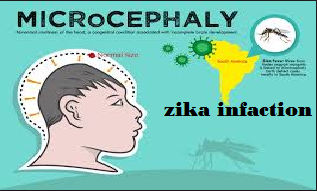NBRC scientists interpret how Zika infection causes microcephaly
National Brain Research Center-drove group of analysts has effectively recognized the atomic and cell components by which Zika infection causes microcephaly. Children conceived with microcephaly have essentially littler head estimate contrasted and typical infants. The specialists found the encompass protein (E protein) of the infection, which is in charge of the passage of the infection into cerebrum immature microorganisms, was in charge of capturing the expansion of human fetal neural undeveloped cells and furthermore executing the phones that were getting to be neuron-like. The joined impact lessens the pool of fetal cerebrum cells prompting littler size of the mind.
"In spite of the fact that more examinations are required, killing the E protein of the infection can help avert or lessen the hurtful impacts of the infection in a creating hatchling. The E protein can be viewed as an imaginable remedial target," says Dr. Pankaj Seth from the Department of Cellular and Molecular Neuroscience at NBRC and relating creator of a paper distributed in the diary Cell Death and Differentiation.
The E protein in Zika infection is transformed and altogether different from the wrap protein of different flaviviruses, for example, dengue, West Nile virus, yellow fever and Japanese encephalitis.
"At the point when four proteins that have just been distinguished in different flaviviruses were over-communicated [produced in excess], the E protein was observed to be more powerful in capturing the multiplication of cerebrum undifferentiated cells. The other three proteins were acting in a less noteworthy way. So we facilitated think about the E protein. We additionally sequenced the RNA of undifferentiated organisms after the presentation to E protein to see how the immature microorganism RNA gets influenced," says Reshma Bhagat from NBRC and first creator of the paper.
On sequencing the RNA, they discovered 25 microRNA of foundational microorganisms were either communicated in overabundance or next to no within the sight of the E protein. Two of the microRNAs manage the declaration of human qualities and assume an imperative part in mental health and keeping up the capacity of undifferentiated cells to restore themselves (stemness).
At the point when foundational microorganisms begin separating, one cell goes into self-restoration and turns into an immature microorganism while alternate takes after the heredity to wind up some sort of a mind cell. "What we saw is the point at which the E protein is over-communicated inside undifferentiated cells, it advanced untimely yet flawed development of neurons. They begin turning into a neuron-like cell yet the whole procedure of turning into a neuron cell isn't finished effectively as is broken and they tend to pass on normally," says Dr. Seth.
While the E protein was not able to slaughter the foundational microorganisms as they are part stronger, it could execute the neurons. "Neurons are more defenseless to neurotoxin and don't isolate. So there are fewer cerebrum cells prompting littler size of the mind," he includes.
To approve the discoveries, the analysts in a joint effort with Prof. Jonaki Sen at the Indian Institute of Technology (IIT) Kanpurintroduced the E protein in pregnant mice at 13.5 days development and reaped the cerebrum two days after the fact. "We saw the undifferentiated cells had lessened in number and they weren't multiplying," says Bhagat.
Different analysts had presented the infection in cerebrum immature microorganisms and found the expansion of undeveloped cells getting restrained. "Be that as it may, nobody knew which part of the infection was causing the issue. Our examination has comprehended the baffle," says Dr. Seth.







No comments:
Post a Comment